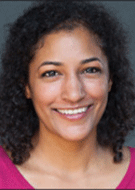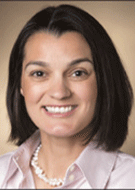Leaders Find New Ways to Inspire Next-Generation Radiologists
Learning is a two-way street with today’s residents, early-career radiologists




This is the third in a series of RSNA News articles on leadership in radiology. Read part one and part two.
If you listen to social media, relations between the generations today are hopelessly antagonistic. Online, many younger people blame baby boomers for the ills of society. Boomers, in turn, frequently dismiss millennials and Gen Xers as fragile, sheltered and incapable of dealing with setbacks or criticism.
But conversations with radiology leaders reveal an entirely different view. Early career radiologists praise the mentors who have helped them while senior leaders like Joel Platt, MD, professor of radiology at the University of Michigan Medical School in Ann Arbor, count their interactions with younger colleagues as among the most treasured aspects of the job.
“The best part of looking back at what I’ve accomplished in radiology isn’t the papers I’ve authored, it’s seeing the trainees I have helped in some small way emerge in leadership roles,” Dr. Platt said. “To see them travel that path has been a wonderful part of academic radiology that I didn’t fully appreciate when I was in the early years of my career.”
Dr. Platt’s approach to bridging the generation gap includes seeking common ground with his younger charges. If a colleague has an interest in something he knows little about — say, cricket or women’s soccer — Dr. Platt will hop on Google to get up to speed.
“I try to find a way that’s not radiology-related to make a connection with a resident, like talking about a movie or a TV show or a sporting team,” Dr. Platt said. “If they need help with something, like having too much noise in the reading room, or they need to leave early to deal with with childcare, I’ll do my best to help. If I can help in small ways, maybe they will trust me enough to come back seeking something more significant, like career advice.”
These investments have paid dividends at the University of Michigan, where a number of Dr. Platt’s trainees have moved into leadership roles. Dr. Platt, who served as director of the abdominal radiology division from 2002-2020, was succeeded in that position by former resident Kate Maturen, MD.
Another former resident, Kara Gaetke-Udager, MD, is now an assistant professor of radiology and director of the residency program. Along with lessons learned from faculty including Dr. Platt, Dr. Gaetke-Udager draws on her own experience to inspire and lead the next generation of radiologists.
“I often feel like a parent,” Dr. Gaetke-Udager said. “I want to encourage them and see them live up to their potential, because they are so talented. At the same time, I know how stressful it can be in their shoes. That gives me a better perspective, and I try to balance having high expectations but allowing residents to be themselves and to take risks.”
“The role that Kara fills today is very selfless and giving,” said Dr. Platt of his former resident. “She spends a lot of hours helping our young residents develop and become future stars and it’s wonderful to see.”
I try to find a way that’s not radiology-related to make a connection with a resident, like talking about a movie or a TV show or a sporting team.
Joel Platt, MD
Drawing on Diversity
That desire to give back also informs the careers of leaders like Lucy B. Spalluto, MD, MPH, associate professor and vicechair of health equity in the Department of Radiology at Vanderbilt University Medical Center in Nashville.
As a woman in a largely male-dominated profession, Dr. Spalluto was grateful to find a female role model early in her career — Martha Mainiero, MD, her residency program director at Brown University Medical School in Providence, RI.
“I still ask her for career advice regularly,” Dr. Spalluto said.
To ensure all female residents can find women role models and mentors, Dr. Spalluto, the current President of the American Association for Women in Radiology (AAWR), has worked to create programs that help ensure gender diversity and diversity overall.
Along with Stephanie Spottswood, MD, MPH, Dr. Spalluto created Vanderbilt Women in Radiology, an initiative designed to promote a departmental culture that supports the career advancement of women in radiology. Vanderbilt’s Women in Radiology is part of a larger diversity initiative in Vanderbilt’s Department of Radiology that aims to increase not just gender diversity, but also the number of underrepresented minorities in radiology.
“Diversity helps to change the thought process in leadership roles, including how we think of policies and how we design educational projects,” Dr. Spalluto said. “Everything we do can be improved with a more diverse workforce.”
Dr. Spalluto is also part of the second class of the Leading, Empowering and Disrupting (LEAD) program. The program, jointly led by the Society of Chairs of Academic Radiology Departments and GE Healthcare, seeks to increase the number of women in leadership positions in radiology. Along the way, she has learned important lessons about leadership in general.
“It is extremely important to recognize that every person is an individual and has very different needs and preferences to succeed in academia. It is also tremendously important to remember that communication is a two-way street. You really have to listen more than you talk.”
Listening not only helps mentors build trust with younger colleagues, it also gives them a chance to learn, said Aarti K. Sekhar, MD, associate professor in the Department of Radiology and Imaging Sciences at Emory School of Medicine in Atlanta.
“In the past year, I’ve learned how to lead a case conference on Zoom, record it, post it on YouTube and our website and Tweet it out to the public,” Dr. Sekhar said. “That was all taught to me by one of my younger colleagues, Dr. Nelly Tan. I’ve learned so much from millennials and I think we really need to encourage their creativity and problem-solving skills.”
Dr. Sekhar has discovered that many of her residents and younger colleagues consistently defy stereotypes.
“People will say you can’t give millennials feedback because they’re coddled and they won’t take it well,” she said. “I would say just the opposite: If you set the expectations from the beginning, then they are very responsive and actually want more feedback.”
As part of her effort to get early career radiologists more involved and excited about the profession, Dr. Sekhar practices coaching, a process in which a coach experienced in asking the right questions helps a client set and achieve their own goals in both work and life.
When Dr. Sekhar was assigned an executive coach at Emory, the experience was so positive that she has since hired her own coach. They meet once every two or three weeks via Zoom to discuss career and life objectives.
She brought the method to several small groups of radiology residents who now coach each other and meet regularly to set goals and monitor their progress.
“Coaching holds you accountable so that you don’t just have vague goals or dreams, It’s more like a continuous feedback process,” Dr. Sekhar said.
Getting to Know Residents as People
The role of active, engaged leaders like Dr. Sekhar looms large as members of the next generation enter medical school. Those who choose radiology will face daunting challenges such as increasing workloads and the integration of artificial intelligence into the workflow, all set against a landscape altered by the COVID-19 pandemic. C
ompassionate, caring leaders and role models will be more necessary than ever for the next generation of radiologists, Dr. Gaetke-Udager said.
“It’s our job to train outstanding radiologists, but there are so many other things that happen in residents’ lives during training, and we need to be supportive of their wellness,” Dr. Gaetke-Udager said. “If we do that, we will see our graduates go on not only to be leaders in the field, but resilient human beings who are happy and balanced. That would mean we’ve been successful."
For More Information
Learn more about the skills identified as necessary for leadership in this RSNA Infographic.